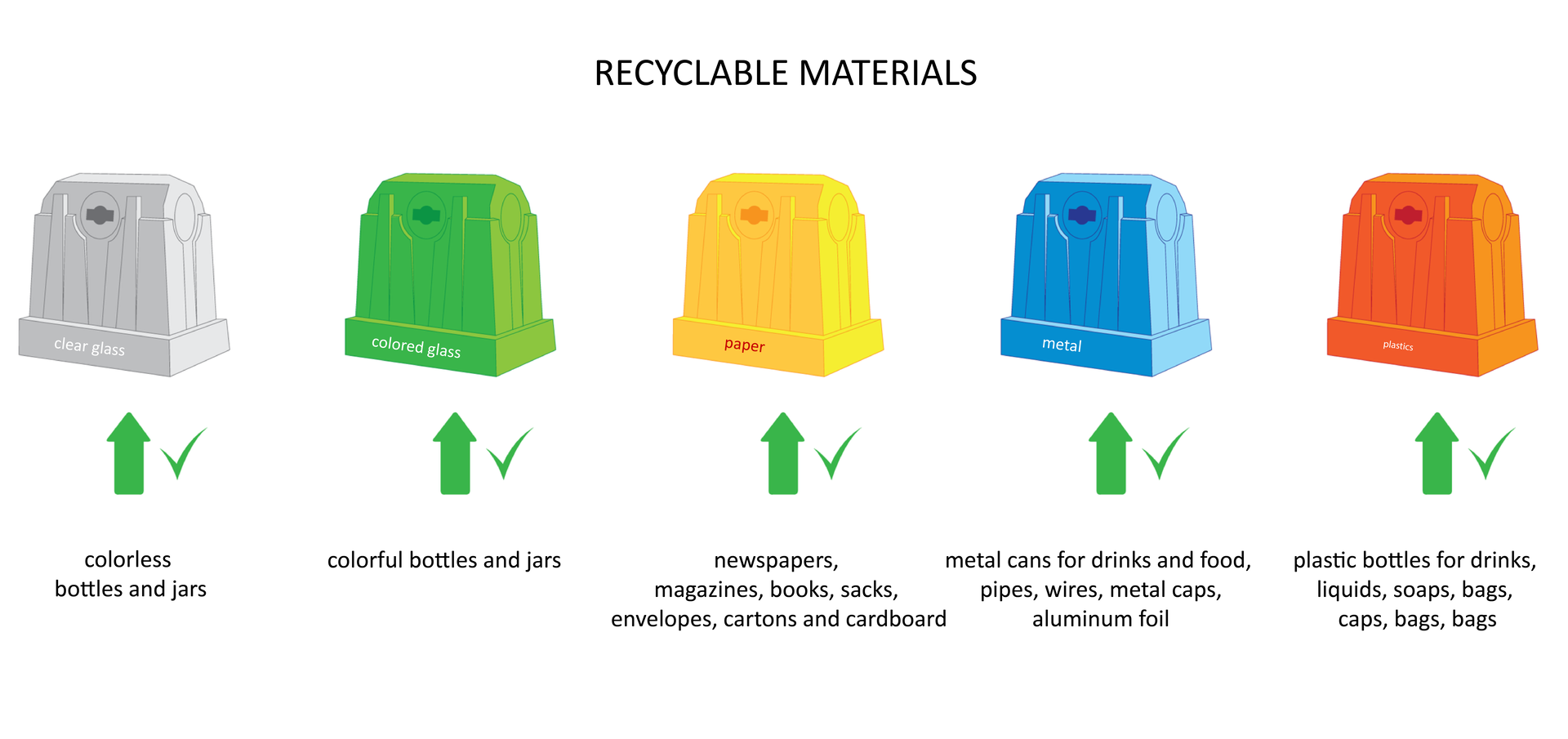What can we do to produce less garbage?
that things that we use every day are made from various materials;
that some things are non‑durable and are quickly destroyed, while other things remain unchanged for many years.
which garbage can be recycled;
how to make shopping in an environmentally‑friendly way;
to explain why waste should be segregated and processed;
to segregate household rubbish on your own.
Is it worth paying attention to where we throw rubbish? Of course it is! It does not look nice when the autumn wind brings plastic bags with falling leaves. When we see plastic bottles floating in a river, we ask ourselves: Why are we surrounded by so much rubbish? Perhaps we can do something to reduce its amount?

What happens to garbage?
We produce a lot of rubbish every day. It includes waste of all kinds – food leftovers, discarded everyday items like old pens and broken toys, disposable plates and cutlery from fast‑food outlets. Just think that nearly every product we buy comes in some sort of packaging, which is thrown away as soon as our purchases are unpacked, and finally it ends up in a landfill. In addition, garbage contains many poisonous substances which contaminate water and soil.


Why do we segregate waste?
One of the ways to look after the environment of our planet is to segregate wastesegregate waste. It makes it possible to process and reuse a lot of rubbish, that is to recyclerecycle it. In this way, we reduce the amount of waste destined for disposal in landfills or incineration facilities. It should also be remembered that some waste (e.g. food leftovers) decomposes. This makes it possible to recycle waste in a process called compostingcomposting. The resulting compost is rich in nutrients and can be used as a soil conditioner (for example, in urban green areas or in gardens).
Reusable materials are called secondary raw materialssecondary raw materials. They include paper, glass, metal and plastic waste. Their reuse enables us to save water, energy and raw materials needed for producing different products. This is why commonly used products should be reused whenever possible.
Before you watch the film entitled “What can be done from a plastic bottle?”, write down a research question and a hypothesis. Watching the film, write down your observations and, finally, your conclusions.

Film dostępny na portalu epodreczniki.pl
Nagranie filmowe dotyczące co zrobić, by nie śmiecić. Pokazano, jak z plastikowej butelki zrobić karmnik dla ptaków - wsypać do niej ziarno. Do nakrętki przymocować drut do powieszenia. Przez butelkę przebić dwie łyżki drewniane.
Every type of waste should be disposed of in appropriate containers. To make it simple, they are usually colour coded. In addition, containers have labels with information what waste should be placed in each of them and what should not. Most often, containers are intended for the disposal of specific waste materials. In some places, there are also containers for dry and wet garbage, i.e. garbage that can be used for composting.
Can garbage be dangerous?
Some things such as batteries and accumulators cannot be disposed of in a landfill. This is because they contain harmful substances such as lead and cadmium which might penetrate and contaminate water and soil. Hazardous waste also includes fluorescent lamps, electronic equipment, drugs past their expiration date as well as packaging of paints and other chemicals. They may not be disposed of together with other waste.
What should we do with such materials? In many places, for example in some shops and schools, there are special containers for waste batteries. Separate collection of batteries helps to reduce environmental pollution. You can also recover many valuable raw materials from them. All hazardous waste should be taken to special waste collection points.

During a life science class, pupils talked how they looked after the environment. Indicate which of the behaviours proposed by pupils are advantageous for the environment and which are not.
Toys that I do not play with anymore, I give to younger children of friends., In front of our house, there is a large container and I put all rubbish there., I always pack purchased items in several carrier and shopping bags, When the school year ends, I burn all textbooks and exercise-books in the garden., When I go shopping, I always take a canvas bag for purchased items., In my room, there is a box for waste batteries, which I later throw into a special container in a nearby shop.
| activities advantageous for the environment | |
|---|---|
| activities not advantageous for the environment |
Summary
Waste segregation is a process of collecting garbage and waste products in specially marked bags or containers. We segregate waste by sorting them into categories such as white and colored glass, waste paper, plastics and metals. Food leftovers, which can be used for composting, can be collected separately.
Sorted waste can be used to produce new items – this process is called recycling.
By segregating waste and recycling, we can limit the consumption of natural resources, energy and water and reduce environmental pollution.
Keywords
recycling, waste segregation, secondary raw materials
Glossary
kompostowanie – rozkład szczątków organizmów przez drobnoustroje zachodzący w odpowiedniej temperaturze i wilgotności
recykling – zbieranie i przetwarzanie surowców wtórnych w celu ponownego ich wykorzystania
segregacja odpadów – wyrzucanie posegregowanych śmieci do specjalnie oznaczonych pojemników
surowce wtórne – zużyte produkty i materiały, które nadają się do ponownego przerobu, np. makulatura




